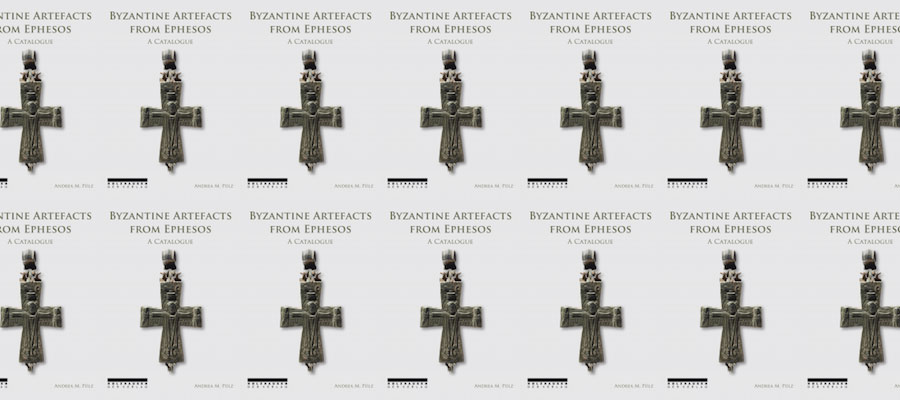Andrea M. Pülz. Byzantine Artifacts from Ephesos: A Catalogue. Verlag Holzhausen GmbH, 2017.
From Verlag Holzhausen GmbH
The material legacy of the Byzantine period includes, in addition to jewellery and dress accessories, amulets and other magical objects, lead seals, bread stamps, medicinal and cosmetic instruments, weighing scales and weights, writing utensils and work tools, as well as small-scale implements including various lighting devices, locks and keys. The materials used are equally varied: luxury goods were frequently produced from precious metals, ivory and silk. ›Ordinary‹ jewellery, in contrast, was generally made of nonferrous metal and glass.
Small finds are therefore primarily testimonials of daily life, yet at the same time also of technical skills, economic relations, trading contacts as well as religious and artistic beliefs. Belonging to the luxury goods from the sacred/ecclesiastical realm, for example, are processional crosses, chalices, incense burners, polycandela, reliquaries and votive icons.A differentiation between profane and sacred usage is, however, not always easy, since objects with Christian images and symbols cannot in themselves always be assigned to the ecclesiastical or sacred realm. Thus, for example, reliquary crosses (encolpia) and cross pendants may also be assessed as an expression of individual religiosity and private piety. The perception of the Byzantine jewellery and dress accessories has until today primarily been determined by the luxury goods of gold and silver, although these represent only a minor part of the Byzantine artefacts. The comprehensive analysis of the numerous objects of copper alloys, that is, differing alloys of non-ferrous metals, is also assigned a particular significance, since these are able – as in the case of Ephesos − to provide a valuable contribution to the study of the material culture of daily life and the history of the Byzantine era.
The Ephesian small finds comprise about 1,100 objects and originate from a variety of sites and from differing contexts (settlement areas and graves). We may cite, for example, the Late Antique-Medieval City Quarter south of the Church of St. Mary, the so-called Byzantine Palace, the medieval superstructures and later usages in the Terrace House 2, the Church of St. Mary, or the Basilica of St. John. Thanks to a co-operation with the Ephesos Museum Selçuk it has been possible to incorporate objects into this study whose precise provenance is, in part, unknown (scattered finds which were brought to the museum by the local inhabitants) or which originate from Turkish excavations. The Byzantine finds which were brought from Ephesos to the Kunsthistorisches Museum Vienna in the late 19th and early 20th century have also been considered in this study.
The objects introduced present a selection of the jewellery and dress accessories, as well as diverse crosses, found in and around Ephesos.
